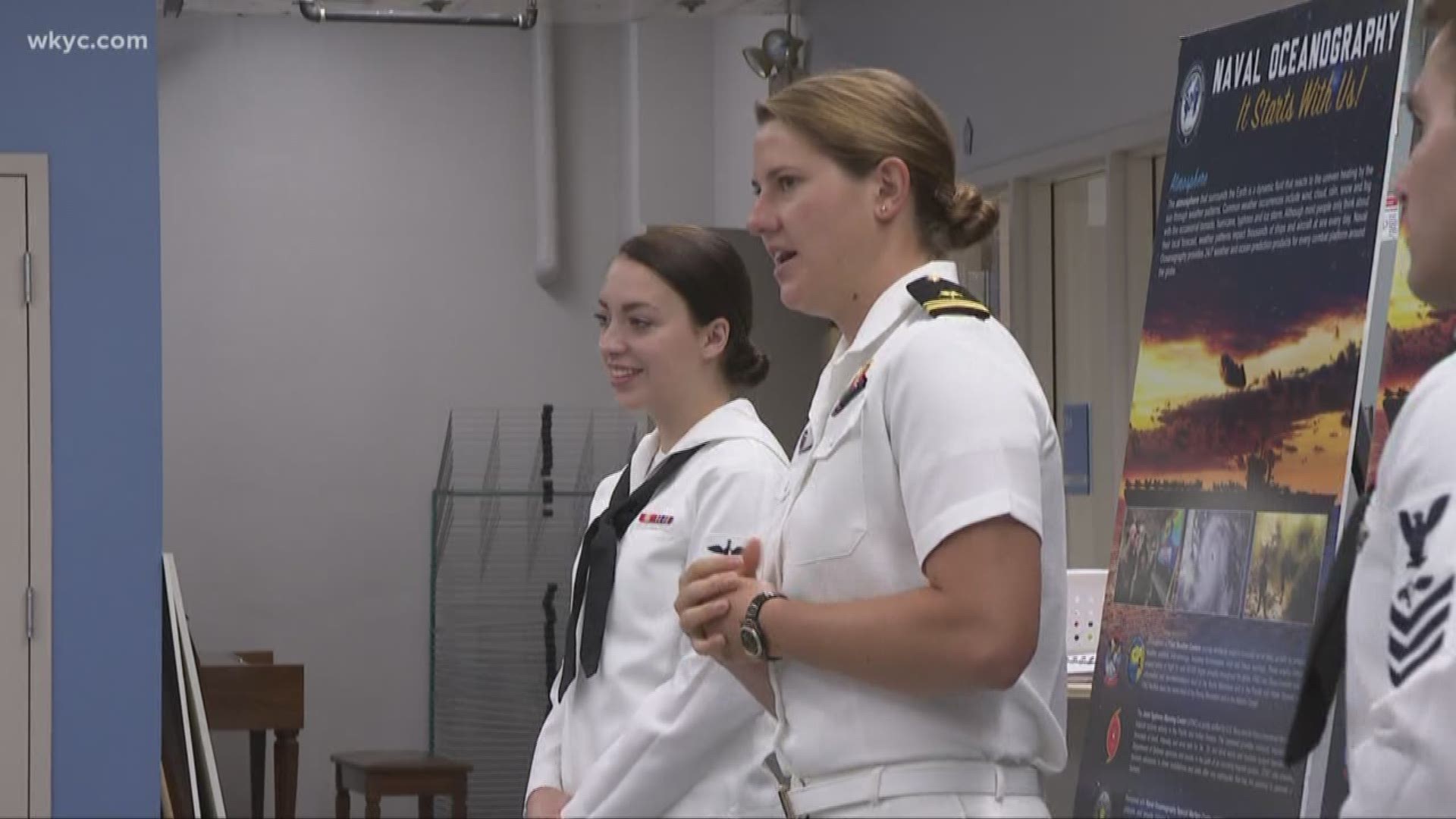We all know how important weather is here in Cleveland, but can you imagine forecasting weather for the entire U.S. Navy fleet?
That includes in the middle of the ocean and in ports around the world.
It's a daunting task, but that's why Northeast Ohio native Lieutenant (Junior Grade) Sierra Werling loves doing it.
Lt. Werling is a meteorologist and oceanographer at the Navy's Fleet Weather Center in San Diego. She was in town last week and spent time with students at Cleveland's Davis Aerospace and Maritime School.
Lt. Werling spent her teen years in Lisbon, near Youngstown, where her mom and dad inspired her love of weather.
"She (her mom) always had the Weather Channel on. she just loved it. My dad is a private pilot so I flew a lot with him. Seeing the clouds develop over long flights with him, just watching them grow, I wanted to know why. Why do the clouds do what they did?," she explains.
For the Navy, weather affects every single sailor, every single day. Meteorologists provide critical forecasts to ships, SEAL teams, aircraft, Marine units, submarines, and any port in the world the Navy is operating in.
The meteorologists collect data and create numerical models for forecasts. Ships send that data every 6 hours. They calculate where the clouds are, where turbulence is, and where freezing levels are. They do ocean mapping, land forecasting, and study swells, tides and water columns.
It's not easy. Remember ships, subs and aircraft are moving, and so is the weather.
"This past summer, it was a very active season, so we saw a lot of hurricanes, a lot of cyclones, near the Philippines and the east coast of Asia. Over 50 knot winds, we consider those destructive winds and if that is going to hit a port, we get ships out of there. We'll tell them most of the time if there is land nearby to hide behind the land mass. The land mass will deflect some of the seas and some of the winds and they'll be better protected," Lt. Werling explains.
Lt. Werling says she feel blessed to work in a job she loves. Her advice for girls considering a STEM career is to never be afraid to pursue something, even if it scares you.
"I think that's when you realize the potential within yourself."
►CLICK HERE to see our special "Girls in STEM" section.
Do you know any STEM stories you want to share with us? CLICK HERE to send us your STEM tip.

